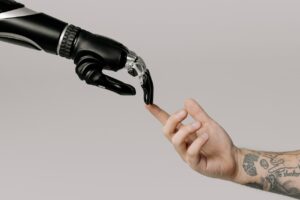Another important trend in augmented reality is WebAR. Powered by web browsers, WebAR doesn’t require users to download additional software. This is the best-case scenario for accessibility. However, it comes at a cost — WebAR offers the most basic AR experiences and lacks many of the features that native AR can offer on mobile devices.
However, in some cases, WebAR can be very useful for simple experiences. Like adding filters to faces, changing the color of hair or objects, background replacement, and simple 3D objects. Simpler virtual try-on experiences are possible with WebAR. These are used by a number of businesses like L’Oréal and Maybelline for their cosmetic products.
Tom Emrich from 8th Wall, the world’s leading WebAR development platform, notes that WebAR is the key to bridging the gap between the virtual and physical worlds. Although WebAR isn’t very powerful at the moment, the evolution of WebAR may be one of the most important ways to engage with the Internet in the future. 8th Wall is continuing to improve WebAR technologies to fulfill this vision.


Average Rating